-
Welcome
-
Scientific advances
-
Infrastructure
-
Education and Dissemination
-
Industrial partners and innovation
-
Stories
After a decade of dedication and hard work, we are excited to present the achievements of the Center for Computing in Engineering and Sciences. This section showcases a range of activities in our personal, institutional, and scientific initiatives.
Here, you will find a range of sections that provide an overview of our key accomplishments. These include scientific breakthroughs, personal development initiatives, and scientific dissemination programs.
10 years CCES institutional presentation:
The Center for Computing in Engineering and Science (CCES) at Unicamp has made remarkable strides across a range of scientific domains. Here, we present a selection of their noteworthy accomplishments, including the application of machine learning for modeling turbulent flows, the reconstruction of genome sequences, simulations of bone fractures and osteoporosis, research into the properties of water, enzyme engineering, development of new materials, and advancements in parallelization paradigms and software. These are just a few examples of the many important breakthroughs achieved by the CCES. For further information on these and other achievements, check our News letters and Research highlights page.
Machine learning for turbulence simulation
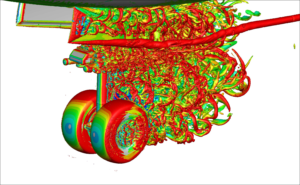
Turbulence affects various physical processes and can impact fuel economy and greenhouse gas emissions. Numerical simulations of turbulent flows have been used to design more efficient engineering devices, but these simulations are still expensive and time-consuming. Reduced order models (ROMs) have gained attention as a lower-cost alternative for preliminary design stages, but they lack robustness and present numerical instabilities. Researchers from the School of Mechanical Engineering and CCES at Unicamp have developed a new class of ROMs that use machine learning techniques to learn from high-fidelity simulation data and have successfully applied this methodology to modeling turbulent flows involving dynamic stall.
Reconstruction of complex genomes
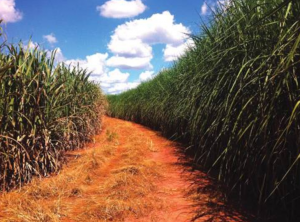
A CCES team has developed a methods for reconstructing complex genome sequences with low computer demand and low costs. The method focuses on reconstructing gene sequences, rather than the entire genome, which simplifies the process and reduces costs. The researchers applied this technique to study the complex genome of the species Saccharum spontaneum, which is used for the production of energy-cane hybrids, an economically attractive option for biofuels production. By identifying and studying about 40,000 genes, the team was able to understand the species' high productivity and resistance to stress, which can be used to develop new and improved cultivars of sugarcane and energy-cane, increasing the use of bioenergy in Brazil.
Simulating bone fracture
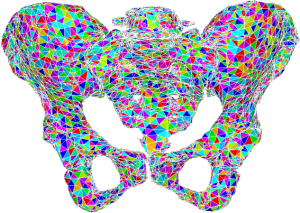
Researchers are using computer simulations to answer questions about bone fractures and osteoporosis, including how bones fracture, how osteoporosis affects bone fracture, and how to identify and anticipate osteoporosis-related fractures. As people live longer, the incidence of osteoporosis and associated fractures is increasing. Medical imaging techniques, such as computer tomography, can provide accurate computational models of affected bones to assist in diagnosis and treatment. Multiscale modelling, which involves simulating fracture from the molecular to the macroscopic scale, requires advanced calculations and computational power, but may help to identify the risk of bone fracture before clinical diagnosis.
Understanding Ice
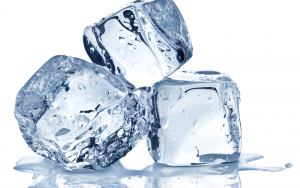
Water is essential for life and plays a crucial role in various fields of knowledge. Understanding the mechanical properties of ice is challenging, and computer simulation methods are used to investigate the processes at a molecular level. However, the mechanical properties of ice have been mostly ignored in the development of water interaction models, making their applicability to the mechanics of ice on a molecular scale unknown. Recent studies have shown the significance of the protons in water molecules in describing the fundamental mechanical behavior of ice. Eliminating them leads to fundamentally incorrect mechanical responses, and their inclusion is crucial for accurate simulations.
Plastic degrading enzymes
 Scientists at the CCES in collaboration with colleagues in the University of Portsmouth (UK), and in the National Renewable Energy Laboratory (NREL – USA), have developed a mutant plastic-degrading enzyme, PETase. The discovery has attracted worldwide attention, with reports by mass media outlets including the BBC, CNN, and TV Globo. The researchers plan to engineer the protein to be more thermostable and to enable large-scale production, so that it can be used in plastic-degrading plants to improve the environment.
Scientists at the CCES in collaboration with colleagues in the University of Portsmouth (UK), and in the National Renewable Energy Laboratory (NREL – USA), have developed a mutant plastic-degrading enzyme, PETase. The discovery has attracted worldwide attention, with reports by mass media outlets including the BBC, CNN, and TV Globo. The researchers plan to engineer the protein to be more thermostable and to enable large-scale production, so that it can be used in plastic-degrading plants to improve the environment.
Accelerating science through cloud computing

CCES researchers have developed OmpCloud, a software that accelerates the execution of complex scientific calculations by over 100 times on cloud computing services. By changing a single code line, any scientific program can be adjusted to cloud computing services. OmpCloud has caught the attention of big companies like Microsoft Azure and Amazon Web Services, which have offered 100 thousand and 60 thousand dollars respectively in cloud credits to fund the research. This technique offers the advantage of remote access to tens of thousands of processor cores, making it attractive to research institutes worldwide.
New materials
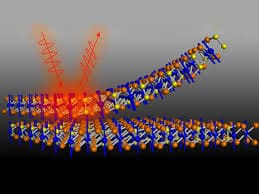
Researchers from the Center for Computational Engineering & Sciences (CCES) have developed a 2D material called hematene, as thick as a few atomic layers, from iron ore, specifically from hematite (Fe2O3). This new material has potential for photocatalysis, making it a promising ingredient for photovoltaic cells. The hematene also presents unique characteristics, such as magnetic-like characteristics and being a 2D structure obtained from a non-lamellar 3D structure, which has led the researchers to explore other minerals as feedstock for new 2D materials.
The Coaraci computer cluster
Coaraci is a powerful computer cluster consisting of 13008 processing cores of AMD EPYC ROME and 42 GPGPUs NVIDIA A30. The cluster has different nodes with varying specifications, such as Login node, Management node, and Visualization node. Additionally, there are 256 compute nodes and 14 GPU nodes with similar specifications, but the GPU nodes are equipped with three A30 GPUs each. For storage, there is a Fat node and a JBOD for Storage and Metadata, which contain 80x HDDs of 16TB each, totaling 1.280 PB, and 4x SSDs of 3.84TB,.
The Kahuna computer cluster
This computer cluster is a powerful computing system designed for high-performance computing and data processing and was the main computational resource of the CCES in these 10 years. It consists of various nodes with different processing capabilities and resources, including a head node, login node, viz-server node, graphic nodes, UV20 node, compute nodes, and a storage node. The cluster features Intel Xeon processors with a total of 1,896 physical cores, a 6,632 TB memory capacity, and multiple GPUs for efficient parallel processing of complex scientific computations and data-intensive applications. With its robust processing power, large storage capacity, and high memory, this computer cluster is capable of handling large-scale data processing, scientific simulations, machine learning, and other computationally intensive tasks.
-
The CCES website
-
Museum activities
-
Cartoon
The CCES website
We are excited to share with you one of our most significant initiatives - the creation of the CCES website! The website, located at http://cces.unicamp.br, is an excellent resource for information on the center and its members. It's regularly updated with new research highlights, scientific communication pieces, in-depth reports on scientific production, software development, career openings, and accessible resources.
As of October 20th, 2022, we have published 256 items on the website, including 138 news articles covering our scientific achievements, 16 software packages, 49 newsletter articles, and 24 events. The remaining entries describe awards, conference talks, theses, and more. We're thrilled to report that according to WordPress statistics, the website has had around 70,000 unique users since its creation.
We're proud to offer this invaluable resource and hope that you find it helpful in staying up-to-date with our work at the Center.
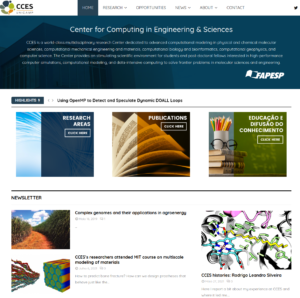
Newsletters
A collection of informative and engaging newsletter articles available on the CCES website. Click here! These articles cover a variety of topics, including scientific breakthroughs, upcoming events, and personal accounts.
We invite you to explore the content available on the website and discover articles that interest you. Among the articles, you will find pieces on the latest developments in genomic research in agroenergy, parallel programming, cloud computing, multiscale modeling, and molecular simulations. We have written these articles with a general audience in mind, making them accessible and easy to understand.
Research highlights
A curated collection of resumes of the articles published by the CCES research groups is available in the research highlights section. Specific topics of interest for specialized audiences can be followed, and a general overview of the Center's scientific achievements can be obtained by navigating the content.
About the center
At the "About" section of our website, you can gain insights into the Center's infrastructure, composition, history, and current members. Currently, the Center comprises 21 esteemed faculty researchers and numerous talented students and post-doctoral fellows. We pride ourselves on fostering a culture of inclusiveness and diversity, and have made every possible effort to attract and engage with talented individuals from all corners of the globe.
The CCES fostered practical activities for scientific education and dissemination in partnership with the Museum of Sciences of the UNICAMP. These involved labs focused on machine learning and practical activities illustrating the research workflow for the discovery of novel medications (Unveiling the Invisible).
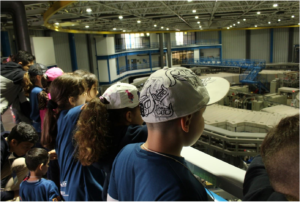
In its initial iteration, the Unveiling the Invisible activity attracted 172 kids and teenagers aged 7 to 14 who participated in four groups. It was a challenge-based activity in which the players were asked to identify the illness and then the treatment for a hypothetical patient who had fallen ill after being bitten by a poisonous animal. Understanding various key ideas in drug discovery research, particularly those involving computational sciences, was part of the activity. These ideas included pattern recognition for disease classification, wave phenomena and radiation scattering, protein crystallography (including an excursion to the Sirius radiation source), inverse problems (reconstructing the structure of the protein from its "shadow"), and molecular docking. The activities lasted for two whole days (morning and afternoon).
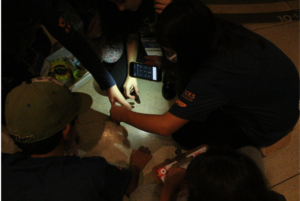
The relationship between CCES and the Exploratory Science Museum at Unicamp has allowed for the continuation of scientific dissemination activities since activities were suspended in March 2020 by providing a number of workshops for schools in a virtual setting. For children aged 7 to 11, there were six "Learning Machines Jr." workshops available, while there were four "Learning Machines" workshops available for children aged 12 and up. These workshops included exercises that explored machine learning ideas. A total of roughly 280 kids from every region of Brazil took part in the online activities. In addition, there were two workshops on machine learning for teachers, each with 50 participants. Additionally, the digital microscope purchased as part of the CCES/Museum cooperation was utilized in five different live online activities throughout this time, resulting in a total of 1306 visualizations, with the participation of four schools.
Exciting news! The CCES is embarking on a project to create a series of animated episodes that are fun and educational for kids. These episodes will be based on the Museum's activities about drug research, and the first episode was completed on December 2022. To complete the series, the CCES will seek out partnerships to ensure the highest quality of content for young viewers.
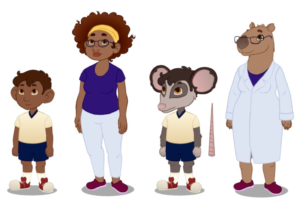
The series follows the story of a new disease (which is now closely linked to the COVID pandemic) and its discovery, including the causative agent, molecular characterization, and development of rational and computer-aided drugs. It also includes the introduction to statistical testing and treatment methods. The storyline features a scientist's mother explaining to her child how she is working to discover and treat this new disease affecting the kid's father. Most of the story takes place in the child's imaginative world, where he playfully interprets complex scientific concepts.
To make the episodes even more engaging, the characters in the animation are personified as adorable, caricature animals from the Campinas region. Check out the figures for a sneak peek of the animation and a glimpse of some of the delightful characters.
Aerospace engineering
Researchers from CEPID-CCES partnered with The Boeing Company to investigate the noise generation of realistic, full-scale, nose landing gear configurations using high-fidelity numerical simulations and acoustic analogy. The project resulted in best practices in terms of computational aeroacoustics setup and the development of numerical tools for data post-processing, which are currently being used by Boeing engineers. The research also led to the development of a novel numerical methodology that has the potential to reduce the computational cost of simulations and can be used in the design of airplanes with reduced noise emissions. Graduate and undergraduate students were involved in the project, and one PhD candidate from CEPID-CCES received the CAPES Prize for the Best Thesis in Mechanical and Aerospace Engineering of 2022. The Boeing Company donated funds to improve research laboratory installations and create a numerical simulation laboratory for undergraduate students. CEPID-CCES is also in discussion with Embraer to develop a partnership to study the unsteady aerodynamics and aeroacoustics of novel concepts of urban air mobility.
In addition, CEPID-CCES was granted a two-year contract from the United States agency, AFOSR, to research the multiscale dynamic failure of heterogeneous materials. The focus was on numerical modeling of polycrystalline and composite materials 3D microstructures and the evaluation of dynamic displacement fields to generate a cohesive law that characterized the failure location and propagation. The direct homogenization method based on the volume average of field quantities of stresses and strains was applied to evaluate the effective elastic properties of composite materials. AFOSR awarded funds for this research.
Accelerating Linear-Algebra for Artificial Intelligence
CCES researchers have been working on accelerating linear algebra applications and improving AI performance. They partnered with the Compiler Technology group of IBM in Toronto and the University of Alberta to develop new techniques for detecting and extracting Generic Matrix Multiplication (GEMM) operations from scientific code and substituting them with calls to Eigen/BLAS/MKL libraries to minimize memory hierarchy transactions. They also designed a new algorithm for convolution that outperformed the traditional img2col+GEMM approach. In addition, CCES researchers have been working with Xilinx, the largest manufacturer of FPGAs in the world, to integrate their new OpenMP Cluster runtime (OMPC) to Xilinx’s MPI hardware accelerator (ACCL) and improve collective MPI communication operations in a multi-FPGA architecture. Pedro Rosso, a PhD student of Prof. Guido Araujo, was offered an internship at Xilinx Research in Dublin to advance this project.
Renewable fuels and biomass valorisation
The CCES researchers are involved in a variety of projects related to renewable fuels and plant-based materials, collaborating with several companies and organizations. One of their collaborations is with Scion, a government-owned company in New Zealand that specializes in research, science, and technology development for the forestry, wood, and biomaterial sectors. CCES is working with Scion to develop molecular dynamics simulations of cellulose, hemicellulose, and water components of softwood cell walls. The goal is to better understand the basic molecular features that contribute to the strength and flexibility of hemicellulose-coated cellulose fibrils, which could have practical and industrial applications.
CCES is also collaborating with several companies on ethanol production using cane, corn, and their respective biomass residues as feedstock. One of their collaborations is with Sinochem Petroleo Brasil Ltda to develop new strains of wild and industrial yeasts for first- and second-generation ethanol production. Genetic and evolutive engineering strategies will be used to improve the fermentative performance of Brazilian industrial yeasts, and new technologies based on molecular sieves will be used to reduce the concentration of acids and phenolic compounds in the fermentation medium. CCES is also working with Eldorado Brasil S.A to analyze the composition of the microbiome present in the rhizosphere of a commercial clone of eucalyptus and develop synthetic communities of microorganisms to improve drought resistance in commercial eucalyptus plantations. Finally, CCES has signed a new contract with Shell Petróleo Brasileiro Ltda to develop and scale up the biohithane production process from vinasse and filter cake residues from the sugarcane ethanol production process.
High-performance and portable device computing
Projects developed by CCES researchers have addressed challenges in high-performance and portable device computing. One project focused on parallelizing loops containing loop-carried dependencies, a difficult task due to the overhead of communicating dependencies between iterations. The sub-project analyzed synchronization costs of two loop parallelization algorithms on modern computer architectures and presented a novel algorithm, called Batched DOACROSS (BDX), which was later licensed by Samsung. Another project aimed to design an extension to the OpenMP programming model to enable the easy portability of a program from a single node to a whole cluster without changing the program. Lastly, a partnership with Samsung focused on improving the memory compressor on Android devices to store part of the memory data in compressed form, addressing the challenge of increasing memory requirements for mobile phones as users install more apps and new functionalities.
Enzyme engineering
Adisseo is a company that focuses on developing and producing nutritional solutions and additives for animal feed, including the enzyme solutions Rovabio Excel, Rovabio Advance, and Rovabio Advance Phy. One branch of Adisseo is dedicated to improving the digestibility of animal food. Their Rovabio Advance provides a multi-enzymatic solution that improves overall feed digestibility, including metabolizable energy, digestible amino acids, available phosphorus, calcium, and sodium. CCES researchers, led by Prof. Skaf, signed an agreement with Adisseo in July 2021 to perform structural modeling of key enzymes in the Rovabio Advance enzymatic cocktail. The cooperation was successful, and new contracts are being considered. However, the ongoing war in Eastern Europe is an aggravating factor that may limit new investments in this area.
The CCES has been a destination for numerous researchers, students, and post-docs over the last decade. Here, we share some of their stories and how the center contributed to their research and professional success. For more information about their experiences, click on their names to read the full stories.
 Daniela Damasceno
Daniela Damasceno
"Being linked to CCES was very important for the development of a multidisciplinary research, which involved engineering as well as chemistry and physics areas. Our research at that time targeted systems ranging from the nano to the macro scale."
 Clarisse Ricci
Clarisse Ricci
"The lively discussions and exchanges that took place every day undoubtedly broadened my critical thinking, stimulated my creativity, and taught me many of the tools and resources that I use in my research to this day."
 Josue Labaki
Josue Labaki
"One example of application is the Sirius Project, the new Brazilian synchrotron light source, the subject of my work as a post-doctoral fellow at CCES. Particle accelerators like Sirius are classic examples of large structures sensitive to vibration."
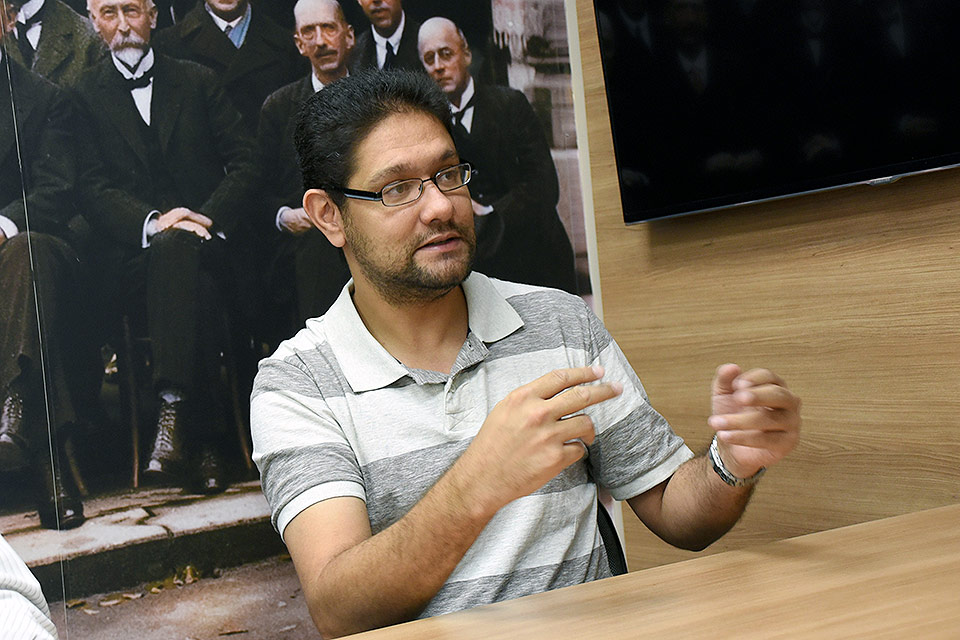 Rodrigo Leandro Silveira
Rodrigo Leandro Silveira
"With all the computational background I acquired at CCES, especially the ability to couple traditional methods of computational chemistry with recent algorithms linked to Artificial Intelligence, the challenge of understanding these enigmatic enzymes and thus contributing to the advancement of new sustainable technologies became more and more inviting."
 Hervé Yviquel
Hervé Yviquel
"Hello! My name is Hervé Yviquel. I am a research scientist in parallel computing. This means that I might be able to help if you have a computing problem that you want to solve faster, for example a computer simulation solving a scientific problem. I have been recently contracted as assistant professor at the Computing Institute of UNICAMP and this is an important step in my international career journey."
 William Martins Vicente
William Martins Vicente
"The contact with this multidisciplinarity of CCES contributed a lot to broaden my horizon of potential research lines to pursue. With the end of the post-doc, the big change from Mechanical Engineering to Agricultural Engineering was no doubt facilitated by the previous participation in a multidisciplinary research center."


